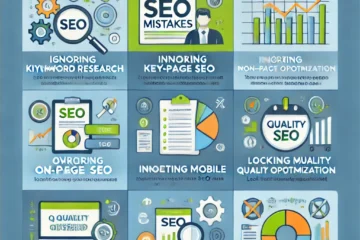Writing a blog might seem like a no brainer. However there are 3 major things business blogs are doing wrong. From being too vague with content to having a lack of authenticity to even not doing a good job marketing blog posts. It’s not as simple as writing about a topic and posting it online. There is much more involved and even a purpose for blog posts. Writing content for some niches can result in some very dry content. The problem with this is that it can affect SEO in a few ways.
1. The Content Is Too General

Many times businesses small to large will have a 3rd party write the content for weekly blog articles. While this may seem like a great idea to automate parts of the difficult parts of a website. The bigger issue rests in how the content is written and while the writers might be subject matter experts, they aren’t your business. So that written content comes out a little on the general side of the subject and not very specific. Leaving readers with more questions than answers.
Don’t Restrict The Writer’s Flow
Sometimes restrictions with word limits can cause content to sound dry and boring. It’s better to write for the user than for some preconceived notion that “x amount of words” is going to rank best. That’s simply not true, search engines have a profit related connection with serving the most relevant search results. Avoid limitations on content and write for the user, then the content has more authenticity to it.
Writing Services Can Dry Out Copy
Sometimes when a website publishes a blog post, often the content is dry and lacks actual substance. Users attempt to read this content and get turned away due to the level of boredom it induces. This can be the result of using a 3rd party writing service where content experts may not have been hired.
When webpage content talks about a subject too vaguely a lack of authority is displayed. This lack of authority directly converts into a lack of authenticity and quick results in the user seeking another website. Make sure to edit any 3rd party content and add some authentic touches.
2. A Lack Of On Page SEO
The most simplest things are often the ones to be forgotten. On page SEO, despite being such a huge factor in SEO is one of those things. Especially when blog posting in at hand. Every blog no matter the niche needs to follow a certain recipe in order to cross on page SEO off and rank that content.
Things like meta titles aren’t using the targeted keyword or phrase, and there aren’t any subheadings being used to help support and describe the content. Dry content can almost act like camouflage against SEO factors. If it’s putting someone to sleep while they try to optimize, that might be a sign to change things up.
Content Relevancy Connects Users
Content planning and keyword research aren’t just about deciding what keyword to use and what to write about. It’s also to arrange and format the overall content, much akin to creating a storyboard. Without organizing webpage content in an enticing way with images to match context the user optimization aspect is then being left out, leaving SEO on the table.
Keep WebPages Organized

Plus internal linking wraps all that content up in a nice connective bow. Allowing searchbots to find more relevant webpages and help keywords get ranked a little better. It’s all about addressing all aspects of SEO equally to give both the user what they want and the searchbots what they want in a way that makes their decision making process even easier.
3. Hardly Any Content Marketing
Writing a blog post is about half of the whole process to have a blog. The other half is comprised of linkbuilding and content marketing. And most linkbuilding doesn’t happen until some sort of content marketing was done. Some effort needs to be seen on the website’s part to promote original content. Networking and building relationships to find relevant guest posting opportunities.
Actually Engage With Social Media
Currently many businesses and brands don’t really use social media. Use as in actively engaging with users and having authentic moments with potential customers. That’s how brands stay current and relevant to a customer base. Every customer base has certain hours and days they’re more active and social media platform that are used more than others. At the very least finding and focusing on that one of those social platforms will help content spread.
Automatic drip feeds are nice, and brands should continue to use them. However, make sure that some research is done and a focus on where potential customers are will always have positive results. Don’t neglect mobile optimization or natural backlinking chances could be out of reach. In SEO everything is connected so while traffic and keyword rankings might be satisfactory now, know that if further optimization is possible, fixing those issues will improve keyword rankings and traffic.
Need help optimizing your blog posts?


